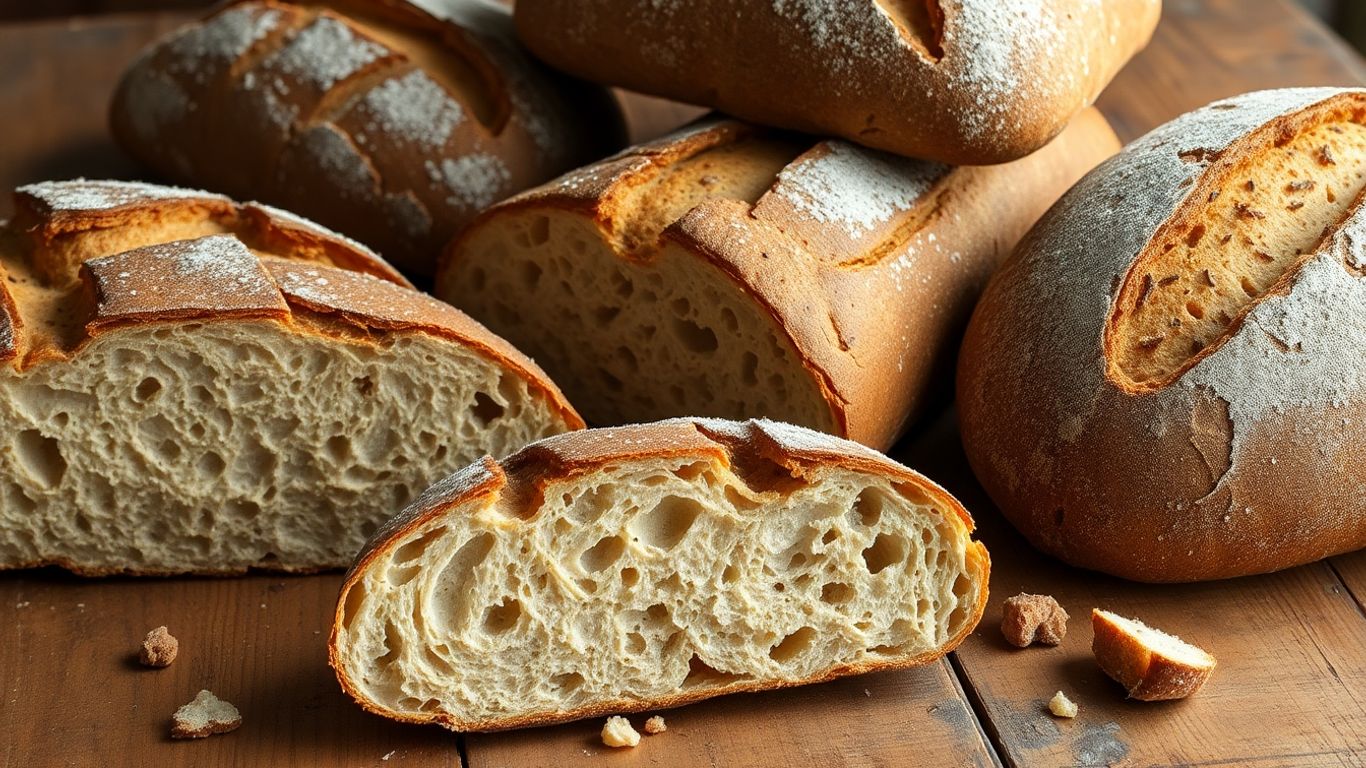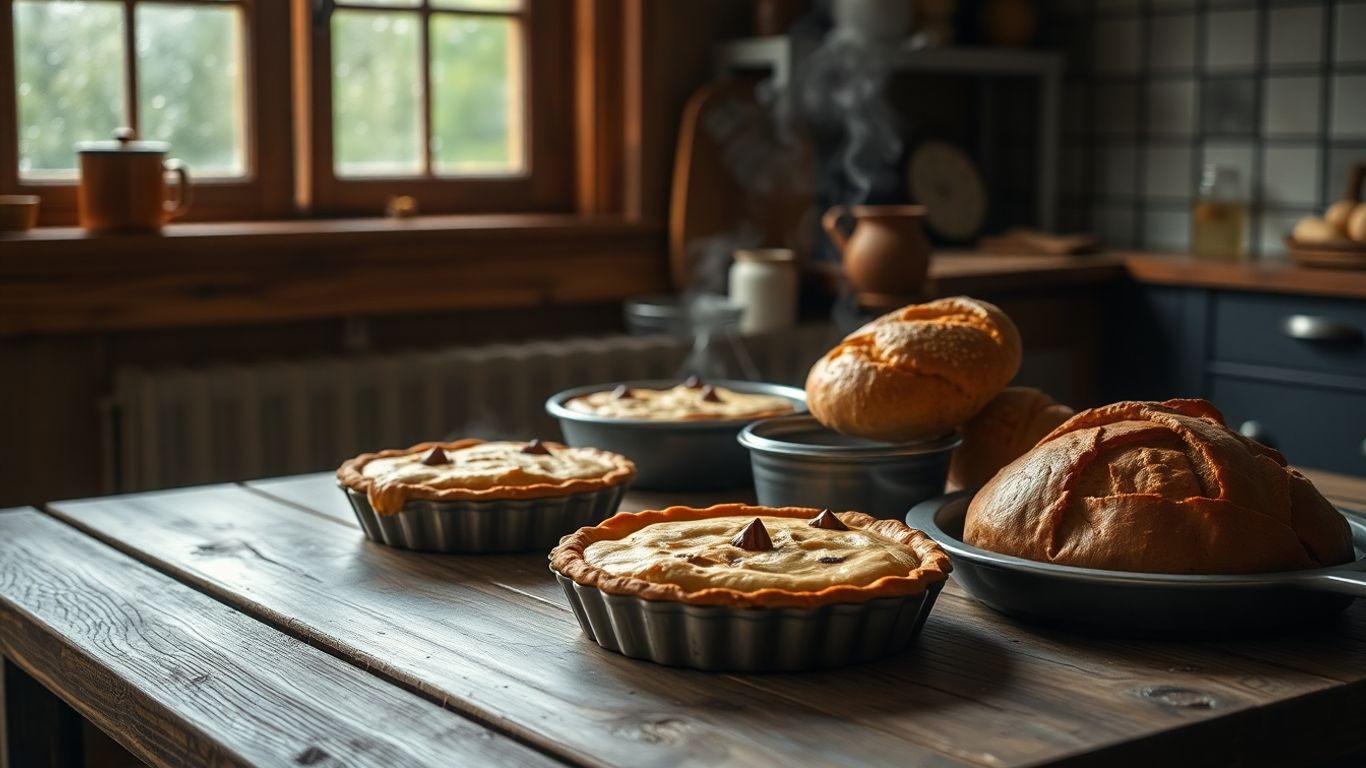There’s nothing worse than waking up excited for yesterday’s pastry, only to find it’s gone all soggy or chewy. I’ve been there—thinking I could just pop it in a bag and it’d be fine, but nope. If you want to store pastries overnight and keep that lovely flake, there are a few tricks you’ll want to know. Let’s break it down so your morning treat is just as good as when you first got it.
Key Takeaways
- Wrap pastries tightly in foil or parchment before putting them in the fridge or freezer to help keep their texture.
- Reheat pastries in the oven (not the microwave) to bring back their flakiness and avoid them turning chewy.
- Some pastries, like galettes and donuts, don’t freeze well—so only refrigerate them and eat within a few days.
Best Practices to Store Pastries Overnight Without Losing Flake

Storing pastries overnight and still waking up to that perfect flakiness? It’s totally doable if you’re careful. No one wants to munch on something sad and soggy in the morning. Here’s how I’ve managed to keep my pastries almost bakery-fresh for breakfast, using the fridge and freezer, and picking the right materials for the job.
Using the Fridge or Freezer Effectively
There’s a real trick to using your fridge or freezer so things don’t go downhill overnight:
- Pop pastries in the fridge if you plan to eat them the next day. Most will keep their structure for up to three days if you’re careful with how you wrap them.
- For longer storage, a freezer is the way to go. Wrap individual pastries tightly in foil. This locks in moisture—no freezer burn—and helps them keep texture. Try to eat anything frozen within a month; after that, things get a little ‘meh’.
- Stuff like cheese Danish can go into a container, stacked up with parchment between layers to stop sticking and squishing. They last about a week in the fridge, or even longer if you freeze them.
If you shove a pile of pastries into the fridge bare, expect limp and dry results. It’s all in the wrapping.
Choosing the Right Packaging Materials
This bit actually matters. The wrong wrap can mean stale pastry by morning. Here’s the order that’s worked best for me:
- Always wrap your pastry in foil or wax paper first—direct contact makes all the difference.
- After wrapping, pop them in an airtight container or a solid freezer bag (get the air out before sealing).
- For pastries with sticky toppings, parchment paper is a must between layers so nothing turns into a mushy mess.
Good packaging makes the difference between a flaky pastry and a chewy one.
Quick Comparison Table
| Packaging Type | Best For | Keeps Flake? |
|---|---|---|
| Foil | Croissants, puff pastries | Yes |
| Wax/parchment | Danish, sticky buns | Yes |
| Plastic wrap only | Not much, can get soggy | No |
Being fussy about storage might feel unnecessary, but it means you’ll still get that satisfying crunch when you bite in the next day. I never just leave pastries on the counter overnight—always regret it!
How to Reheat Pastries and Restore Crispness

It’s a real shame when yesterday’s croissant turns limp or soggy, right? Trust me, you can get back that fresh-from-the-bakery crunch – but you have to know the right steps. Here’s how to bring your pastries back to life without turning them into a chewy disaster.
Oven Techniques for Maintaining Flakiness
Ovens really are your best friend for reviving pastries! If you try to use a microwave, you’ll just end up with sadness (and rubbery pastry). Here’s a simple approach for flaky results:
- Preheat your oven to 180°C (about 350°F).
- Wrap the pastry loosely in foil. This traps a bit of steam, which will gently soften the inside.
- Bake it for 8-12 minutes, depending on thickness. Unwrap for the last 2-3 minutes if you want that crisp outer shell.
- For an extra-crumbly finish, pop it straight onto the oven rack (no tray) for the last few minutes.
If you’re dealing with particularly buttery bakes, like the croissants from The Daily Knead’s bakery shelves, this technique really makes a difference.
Common Mistakes to Avoid When Reheating
Let’s be honest, some pitfalls are all too easy to hit. Here are a few things to steer clear of:
- Don’t use the microwave – it zaps the flake out of pastry in seconds.
- Avoid reheating straight from frozen; always thaw overnight in the fridge first.
- Watch the timing! Overheating dries everything out fast.
- Never reheat with plastic wrap or in a closed container, as you’ll just create soggy pastries.
| Mistake | What Happens |
|---|---|
| Using Microwave | Soggy, tough pastry |
| Overheating | Dry, brittle texture |
| Covering too tightly | Loss of flakiness, soggy |
| Skipping foil for oven | Uneven heating, dry edges |
Honestly, I’ve ruined some decent bakes by being impatient or lazy, so now I always take a few extra minutes to get it right. It’s worth it when you bite in and get that lovely crackle instead of a dull slog.
If you start with good quality pastries and don’t rush the process, you’ll almost forget they’re day-old by the time you’re tucking in. It does make all the difference.
Special Considerations for Different Types of Pastries
Every pastry has its own personality, and when it comes to keeping them flaky overnight, a one-size-fits-all approach just won’t cut it. How you store (and later revive) a croissant is nothing like what you’d do with a doughnut or a rustic galette.
Guidelines for Viennoiseries, Croissants, and Galettes
Let’s start with what I’ve learned from countless too-soft croissants and soggy galettes in my fridge:
- Croissants and Viennoiseries:
- If you’ll eat them the next day, keep them in the fridge, wrapped in foil or a paper bag inside a plastic bag.
- For longer than two days? Freeze them individually, tightly wrapped. Keep it under a month or they just forget how to taste buttery and lovely.
- Always let frozen croissants thaw at room temp before reheating—straight from freezer to oven often goes wrong.
- Galettes:
- These are at their peak when fresh, but in a pinch, a night in the fridge is okay. Just don’t try freezing—texture gets weird and the buttery layers turn sad.
Here’s a quick cheat sheet:
| Pastry Type | Fridge-Up To (Days) | Freezer-Up To (Days) | Notes |
|---|---|---|---|
| Croissant | 3 | 30 | Wrap well, avoid moisture |
| Galette | 3 | ✗ (Don’t freeze) | Eat fresh if possible |
| Danish | 3 | 30 | Freeze tightly wrapped |
Why Some Pastries Should Never Be Frozen
Believe me, not everything gets along with your freezer. A few rules:
- I never freeze filled doughnuts, custard tarts, or galettes.
- Moisture-rich fillings will seep when defrosting, making crispy crusts limp.
- The delicious crackly top on some pastries, like sweet morning buns, turns sticky—no thanks!
If you’re not sure, freeze one pastry as a test before sacrificing the whole box. You’ll thank yourself when you’re enjoying a flaky treat rather than something disappointingly chewy.
Every type of pastry has its own best way to store—if you treat them right, your morning coffee will have the perfect flaky sidekick.
Each type of pastry can need its own special care. Understanding how to bake things like puff pastry, shortcrust, and filo will help you get the best result. Want to know more about baking tips for all kinds of pastries? Head over to our website and find more helpful guides!
Wrapping Up: Keep Those Pastries Flaky
So, there you have it. Storing pastries overnight doesn’t have to be a big drama. If you’re planning to eat them the next day, just pop them in the fridge. For anything longer, a bit of foil and the freezer will do the trick for most types—just remember, not everything likes being frozen (looking at you, galettes and donuts). When it’s time to eat, a quick warm-up in the oven—first wrapped, then unwrapped—brings back that lovely flake. Honestly, it’s not rocket science, but a little care goes a long way. Next time you’ve got leftovers, you’ll know exactly what to do. Happy munching!
Frequently Asked Questions
Can I leave pastries out overnight, or do they need to go in the fridge?
Most pastries are best kept in the fridge if you’re not eating them the same day. Leaving them out can make them go soggy or stale. If you plan to eat them the next day, pop them in the fridge, preferably wrapped up so they don’t dry out.
What’s the best way to reheat pastries so they get crispy again?
To make your pastries crisp up again, use an oven or toaster oven. Wrap the pastry in foil and heat at 180°C (about 350°F) for around 10 minutes. Then, open the foil so the top is exposed and bake for another 5 minutes. This makes the inside soft and the outside flaky.
Are there any pastries I shouldn’t freeze?
Yes, some pastries like galettes and donuts don’t freeze well. Freezing can mess up their texture and taste. It’s better to eat these fresh or just store them in the fridge for a day or two instead.







